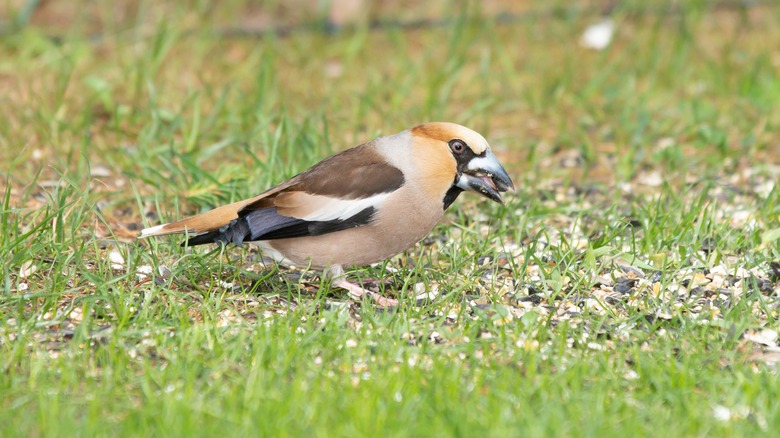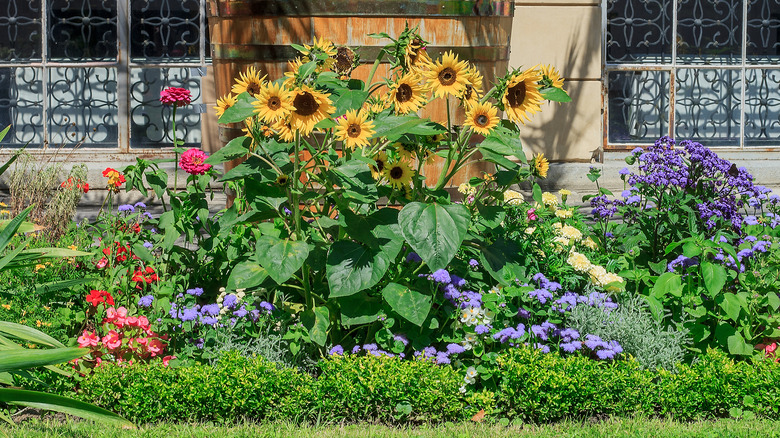Everyone loves the sight of sunflowers (Helianthus) nodding their sunny heads in the breeze on a lazy summer afternoon. Perhaps you’re growing these flowers just for their appearance in your yard, or maybe you like to put the seeds in your bird feeders. However, if you do this, you may have noticed that the grass underneath the feeder is either dead or dying. This is a result of sunflowers being what’s called allelopathic, or basically toxic to nearby plants. Your plants could be suffering as a result of this interesting phenomenon. Further, your garden could also be negatively affected by this flower’s presence because they are heavy feeders.
Sunflowers make wonderful shade for other plants, and they can attract necessary pollinators to your garden. When looking for the best spot to plant sunflowers, keep in mind that they need at least six hours of full sun every day to thrive. And while certain plants may indeed suffer beneath their yellow canopy, some plants are not affected by their superpower. There are also certain things you can do to keep your sunflowers from overtaking your garden.
How sunflowers kill other plants

Allelopathy is when a plant has the ability to negatively affect another plant’s growth through allelochemicals it releases underground. It’s like the plant has a superpower that prevents other plants from growing near it, giving it a natural competitive edge. Sunflowers are one of those plants that have allelopathic qualities. All the parts of the sunflower plant give off toxins that will either stunt the growth of or kill any competitors. This means plants that are unlucky enough to be in the strike zone can suffer from the sunflower’s silent slaughter under the soil. This is also why you see the evidence underneath bird feeders that regularly have sunflower seeds in them.
Another reason the plants around your sunflowers could be suffering is because these tall flowers have huge stalks and root systems that may overtake other plants. Because of their height and need for sunlight, they may also overshadow the garden and give it too much shade. Further, because they’re heavy feeders, sunflowers can deplete nutrients and water from the species around them.
What you can and can’t plant near sunflowers

Avoid planting vegetables near sunflowers because they are especially vulnerable to the allelopathic chemicals. Sunflowers can stunt the growth of vegetables and weaken their resistance to pests and disease. Grass is also commonly affected by sunflowers. Furthermore, certain flowers such as marigolds, daisies, and petunias are particularly vulnerable to these chemicals. Planting your tall yellow flowers with plenty of distance between any of these plants is your first line of defense. Additionally, water and prune your sunflowers regularly to keep them from taking up too many nutrients.
There are also some plants that are known to be alletrophy-proof. For example, you could continue your yellow floral theme by planting black-eyed Susans around them. They’re native plants to North America and would look bright and sunny in the garden. On the other hand, if you want to add a contrasting color, try purple coneflower. These two beauties look gorgeous together, and coneflower is a native perennial that’s ideal for a flower garden. Another lovely flower that’s resistant to allelopathic qualities are dahlias, with their red and pink blooms. However, these love the sun as well, so make sure they’re not overshadowed. There are 28 species of iris native to the United States, which are another option. Pink carnations and roses are also resistant and would make stunning companions.



